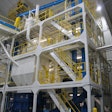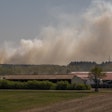Another record-breaking crop year is upon us. According to the USDA’s latest Crop Reports, 2016 production of corn, soybeans, wheat and sorghum will hit an all-time record high of 22.1 billion bushels! And with beginning inventories ahead of this year’s harvest estimated at nearly 3 billion bushels, when will grain handlers catch a break?
Elevators across the country have been busy preparing to take in this bumper crop, but it hasn’t been easy in some parts of the country with piles and full bins from last year still in toe.
This will undoubtably cause challenges for grain elevator operators. While speed is always a No. 1 priority for elevators, producers will be especially pressed for time this year. It’s of utmost importance to have traffic flow signage clearly posted at your entrance, throughout the facility and at the exits to keep everyone safe. Also, remind employees to look both ways before crossing truck pathways. The last thing anyone wants during peak busy season is a traffic accident that could have been avoided.
Another safety concern relates to bin entry. If equipment becomes plugged or if hot spots are detected, there may be temptation to quickly look inside a bin. And when someone wants to do something quickly, they don’t always follow the safety procedures. Remember, entering a bin requires a permit. Before entering, certain equipment needs to be “locked out,” you must be outfitted with safety equipment like a harness and a life line, and you must use an approved form of communication with someone outside of the bin. You should also test the atmosphere beforehand and be well trained on your emergency plan if anything were to occur. For more information on bin-entry safety, I recommend checking out the National Grain and Feed Association’s paper “NGFA Safety Tips: Preparing Bins for Harvest” at http://tinyurl.com/hec8vm3.
The risk of employee fatigue is another factor managers should consider during this busy season. We all know sometimes employees must put in overtime, but there are strategies you use to make sure they’re not overly tired on the job, which can lead to poor decision making and increase the likelihood of accidents. These include hiring additional seasonal workers so everyone has time to take breaks and lunches; utilizing an “on-call” shift to avoid staff shortages if someone is absent; and avoiding incentive programs that reward working excessive hours.
This harvest may be your busiest ever, so let’s try and make it your safest, too. The kind of records that I like to see set are “accident-free days.”


















